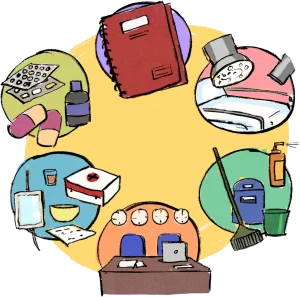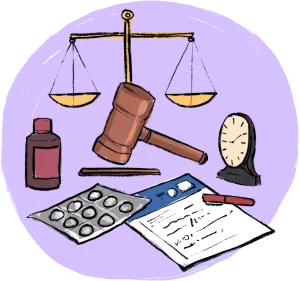Team Communication: The Heart of Collaborative Care

Doctors, nurses, specialists, and support staff share the goal of achieving the best possible patient outcomes. In the high-pressure healthcare environment, alongside core competence to manage an illness, the success of any medical team depends on the critical factor of effective communication between team members. However, the complexity of modern healthcare often means that each team member brings a different perspective, knowledge, and expertise to the table. In this intricate environment, clinicians rarely work in silos or isolation in their clinical practice. They must operate in multi-disciplinary teams where effective collaboration and communication are paramount to ensuring optimal patient care.
Communication Breakdowns: A Real Threat to Patient Safety
The impact of poor communication in healthcare is not just theoretical- it is a documented problem. From missed handovers to unclear instructions, communication failures are a major contributor to medical errors, putting patients at otherwise avoidable risks.
Medico-legal consequences of poor communication

Alongside risk to patients, medical miscommunications may lead to medico-legal cases against service providers.
Improving team communications
- Acknowledge the difference in perspective between team members: Healthcare teams typically consist of professionals with varied expertise, including doctors, nurses, specialists, and support staff, each bringing unique insights to patient care. There are bound to be some differences in opinion between team members for certain patients. The earlier we acknowledge this and devise ways to reach a consensus on the critical issues, the better we will get at functioning as a team.
- Value The Power of Effective Team Communication: When team members communicate effectively, it leads to better coordination, fewer errors, and a smoother workflow, resulting in enhanced patient safety and satisfaction.
- Build Trust and Efficiency in Multidisciplinary Teams: Effective communication is the bedrock of teamwork. It builds trust, empowers team members, and ensures everyone is on the same page. When healthcare professionals communicate openly, they are more likely to share vital information, ask questions, and express concerns that can prevent issues before they arise. On the flip side, poor communication can lead to confusion, hesitation, and frustration- all of which can be a digression from ensuring quality of patient care.
- Explore the wisdom generated by the research on structured communication models: Structured communication models like the SBAR (Situation, Background, Assessment, Recommendation) framework, have proven to be game-changers in reducing errors and enhancing teamwork. In a 2018 study published in BMJ Quality & Safety, implementation of SBAR in hospital settings significantly reduced the rate of clinical miscommunications and improved overall team satisfaction (Impact of the communication and patient hand-off tool SBAR on patient safety: a systematic review | BMJ Open).
- Improve team communication to move from Burnout to Balance for staff: Communication within healthcare teams isn’t just about patient care and the well-being of the professionals who provide it. Stress and burnout can quickly take hold in environments where the pressure is high and the stakes are even higher. Inefficient or ineffective communication only adds to the burden, increasing frustration and fatigue among healthcare workers. Recent studies have stated that communication satisfaction might be associated with job satisfaction, intention to leave and burnout (Communication satisfaction and job satisfaction among critical care nurses and their impact on burnout and intention to leave: A questionnaire study – ScienceDirect).
The Power of Communication: More Than Just Words
When healthcare teams communicate effectively, patient outcomes are improved, and the team dynamic becomes more cohesive, efficient, and innovative. A team that communicates well is a team that can adapt quickly, solve problems creatively, and thrive under pressure.
Our team communications training:
By equipping medical teams with the tools to communicate more effectively, we help them build more supportive, sustainable work environments. Strong communication reduces stress, fosters collaboration, and leads to healthier, happier teams that can provide the best care for patients. Our communication skills training for a team recognise the power of structured frameworks like SBAR and offer a tailored approach to communication training that integrates evidence-based strategies with a focus on adaptive, context-driven methods suited for the team. Our courses equip healthcare teams with the tools to communicate effectively in dynamic environments, ensuring that each member can contribute to seamless, patient-centred care.
Reference:
- Babiker, A., El Husseini, M., Al Nemri, A., Al Frayh, A., Al Juryyan, N., Faki, M. O., Assiri, A., Al Saadi, M., Shaikh, F., & Al Zamil, F. (2014). Health care professional development: Working as a team to improve patient care. Sudan Journal of Paediatrics, 14(2), 9–16. https://pubmed.ncbi.nlm.nih.gov/27493399 / PMCID: PMC4949805
- Kendrick, K. (1995). Nurses and doctors: A problem of partnership. In K. Soothill, L. Mackay, & C. Webb (Eds.), Interprofessional relationships in healthcare (pp. 239–252). Edward Arnold.
- Mitchell, L. M., Anand, A., Muke, S., Hollon, S. D., Joshi, U., Khan, A., Haney, J. R., Shrivastava, R., Singh, A., Singla, D. R., Teja, G. S., Tugnawat, D., Bhan, A., Patel, V., & Naslund, J. A. (2024). Burnout, motivation, and job satisfaction among community health workers recruited for a depression training in Madhya Pradesh, India: A cross-sectional study. BMJ Public Health, 2(2), e001257. https://doi.org/10.1136/bmjph-2024-001257
- Müller, M., Jürgens, J., Redaelli, M., et al. (2018). Impact of the communication and patient hand-off tool SBAR on patient safety: A systematic review. BMJ Open, 8(2), e022202. https://doi.org/10.1136/bmjopen-2018-022202
- Sass, E. J., & Singer, S. J. (2018). Communication challenges and strategies in interprofessional healthcare teams. Intensive and Critical Care Nursing, 48, 24–32. https://doi.org/10.1016/j.iccn.2018.07.001
- Nagpal K, Vats A, Ahmed K, et al. A Systematic Quantitative Assessment of Risks Associated With Poor Communication in Surgical Care. Arch Surg. 2010;145(6):582–588. doi:10.1001/archsurg.2010.105
